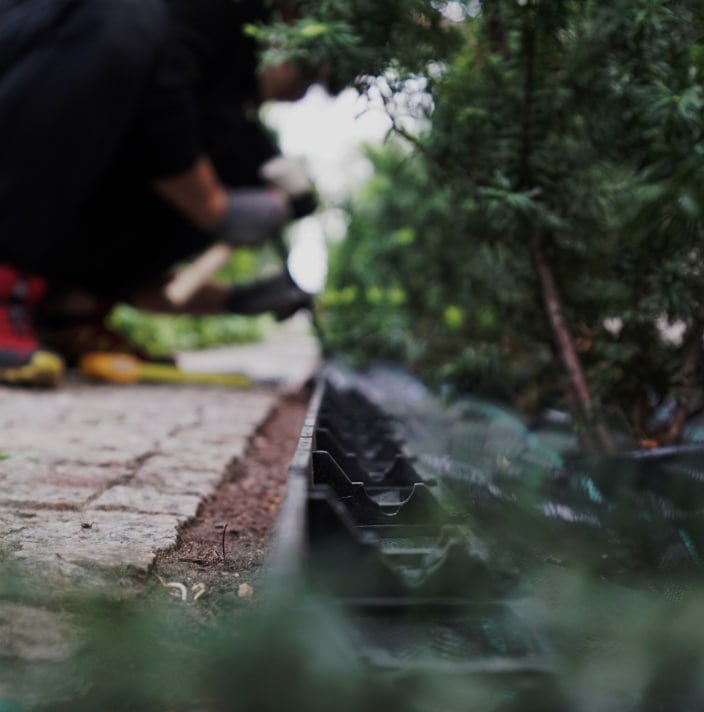
Agro-woven fabric is a special material that is used in horticulture to protect plants from harmful external influences or pests.
Most often made of polypropylene or polyester, characterised by high strength and tear resistance. There is a choice of white and black agro-textile. Thanks to its properties, it finds use in horticulture. It works well as:
The use of agro-textile fabric in horticulture is a fairly common practice. There are several methods for effectively fixing it to the ground. One is to choose and use G‑PIN 16/20 anchors, i.e. plastic pointed pegs (16 or 20 cm) that are driven into the agro-textile spread on the ground using a rubber mallet or by hand. Detailed instructions can be found here: instructions for assembling the agro-textile.
In summary, agro-textile is an effective solution if you want to protect your garden from adverse weather conditions and pests. If well fixed, it will last for years, saving you time and money.
White agro-woven fabric finds its use primarily in horticulture and agriculture. It is a specialised material which has the function of protecting the plants from unfavourable weather conditions. In practice use of agro fleece in white means not only a shield against frost or strong wind, but also a barrier against pests. Its airy structure allows plants to exchange air freely, while preventing the soil from drying out too much. Wondering, how to use agro-textile? It’s simple. First prepare the soil and then spread the material where you want to protect your plants. Lay it over the plants in such a way that they are completely covered.
If you are dealing with large areas, it is advisable to apply several layers of material and the agro-textile will become even more effective.
Black agro-textile has use of Mainly as a tool for weed control in horticulture. Its dark colour means that it blocks sunlight, thus preventing weed seeds from germinating. By using it, you can therefore significantly reduce the occurrence of weeds in your flowerbeds or home garden. Black agro-textile finds use of also in protecting against soil erosion and in conserving soil moisture. One of the main advantages of this material is its durability and ease of installation. So, when it comes to agro-fibrehow to apply it? You can lay it directly on the ground and then cover it with a layer of mulch. Among the disadvantages, however, is that over time it can become brittle and disintegrate when exposed to the elements. Nevertheless, the advantages of agrowoven fabric far outweigh this, making it indispensable for many gardening activities. Another aspect is its ability to retain water, keeping plants better hydrated. Black agro-textile has use of in many areas of horticulture. It guarantees effective protection against weeds and helps to conserve soil moisture. It is therefore worth considering using it in your garden.
Many gardeners ask themselves this question when aiming to optimally protect their crops. Frequency uses of agro fleece depends on your expectations. If it is to protect plants from frost, it is best to lay it in autumn and leave it until spring, taking care to keep it stable during stronger winds. If the purpose of the fleece is to prevent weeds from sprouting, it is advisable to lay it at the beginning of the growing season. When protecting against pests or excessive sunlight, use it at peak times. It is important to check the condition of the agro-textile regularly and replace it if damaged. Remember that flexibility in its application is the key to success and healthy plants. After reading this text, you should no longer be in any doubt as to what it is agro-fibre i such as it use.